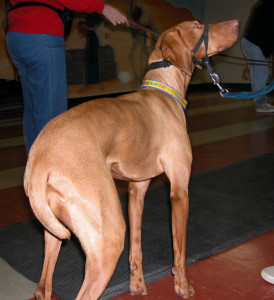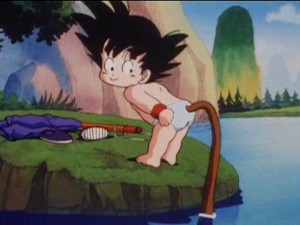If you’re on my emailing list, you would’ve been receiving a few tips from the core topic I’ve been talking about recently. If not, I ain’t a hater; ‘cause I’m still keen on mapping out a bigger and better plan of attack when trying to train your core, posture, and keeping those annoying tight areas that constantly reawaken themselves, away (tight hip flexors, anyone?).
So let’s get started.
To properly train the core you want to make sure the correct muscles are awoken from their all-night-pillow-fights slumber party.
I went over a few of the more intricate ones earlier in the year, but today let’s put it all together and give you more of a plan of attack when looking to really get the most out of, not only specifically your core training, but your training in general. The tail tuck.
The tail tuck.
This might sound like some sort of Saturday night activity, but learning how to engage the proper muscles and keep them activated throughout your training is a huge game changer.
Before I break it down and give you the lowdown on what the hell this tail tuck business is though, let me just first list some of the benefits to this infamous and aptly named tail tuck (or, TT. Yup, I did just create a new acronym).
- Recruitment of more muscles giving you the ability to lift heavier.
- Overall safety for your body short and long-term.
- Addresses posture, keeps it in check and can actually aid in correcting it too.
- Less compensation domination for the muscles you don’t want switching on and causing you constantly tight areas.
Since you should never feel pain in your lower back when training/in life, being aware of why your back is sore of course, is the first step. It’s definitely not always JUST due to twisting or lifting awkwardly; more of an ongoing chain of events that eventually leads to a *pop*.
And strange enough, it could very well come down to being posture related, a hydration issue, or simply just from not training optimally.
How to.
Anyway, I find the best way to explain this neutral spine position is to pretend that you have a tail. 
Once you’ve achieved this minor imagination task, now think about tucking it between your legs.
What you should find is that your pelvis should posteriorly tilt so that you now have engaged your anterior (your front) core and glutes.
Now that you’ve learnt this, let’s put it into play.
Abs with the tuck.
If you have the core stability and strength when performing abdominal exercises on the floor, then there’ll be no pain in the lower back from compensating. By building up to being able to perform, for example, a lying leg raise WITHOUT your lower back arching/becoming painful is actually a pretty simple task and it comes down to progressing correctly.
Once you address your breathing pattern, an exercise I’ve found to be a good start for my clients when programming for some ab-specific training is the dead bug (and its progressions).
During this particular exercise you’re able to aid the flattening of your back to the ground by putting pressure into the wall with your hands, and keeping your legs up and bent at a 90° angle. You are then free to focus on your lower back staying flat to the ground throughout the leg lowering.
Once you’ve mastered this, the first progression is to simply remove the wall. Or hey, you can always just perform it parallel to the wall without having to worry with the whole demolishing thing.
And by progressing through exercises with awareness of how to control your core, it will allow you to perform higher level progressions like a wheel rollout and hanging leg raises so much easier in the future.
It doesn’t stop there with core training however, and the TT is perfect to use even when performing planks. And what’s cool about this is that this will actually engage the proper muscles so that you’re not just hanging out on your lower back muscles (erector spinae), or Sydney harbour bridging-it with your hips in the air.
But not only is the TT helpful with ab training; it also carries over to other areas like squats, deadlifts and push up variations.
Big bangs with the tuck.
From the dumbbell goblet squat to the clean: it’s all good. And by switching on and creating a neutral spine, your spine is going to be so much more stable.
If you arch your lower back excessively (or even at your neck by looking up), “it changes the way your body deals with proprioception and force output.” (- Todd Bumgardner). And not only this, but by using an “arch method” you can also increase the chances of solidifying any offset posture issues that you deal with on a daily basis.
Now before you knock it, think about setting up for a super heavy squat. I mean SUPER HEAVY max back squat. I wouldn’t think TOO many people would be happy to load up by excessively arching their lower backs, right?
Well, by incorporating the TT method (wow, kinda sounds like some sort of Danoz direct advertisement), it immediately takes all the strain and load off your lower back, engages your glutes and allows you to holds tension throughout the movement.
What’s even cool about this is that I would put legit cash money on you being able to squat deeper without that “butt wink” people fall into.
Push ups with the tuck.
One last exercise I want to go through is the almighty push up. It might not seem like it, but push-ups really are an entire body exercise. And by using the TT and engaging your anterior core and glutes, you’ll find that the entire movement is a helluva lot easier.
Since, instead of just using your top half and arms for the movement, and hanging out on those erector’s again, what you will find is that you’ll actually be using your whole body to create tension and power, giving you a higher chance of dominating them.
And, just like the plank; no one wants to see you looking like a caret either.
Try out the TT, let me know what you think of it.


